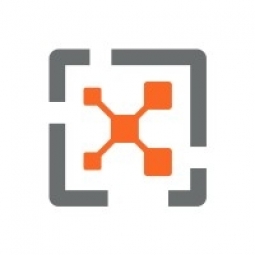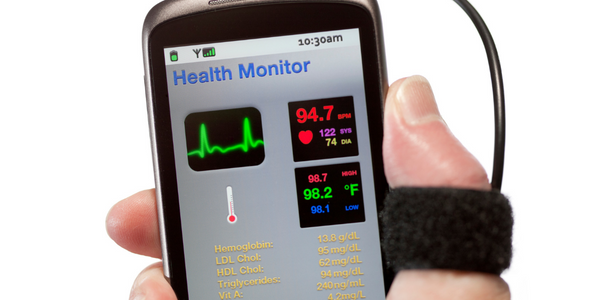Customer Company Size
Large Corporate
Region
- America
Country
- United States
Product
- Illumio Adaptive Security Platform® (ASP)
Tech Stack
- Cloud Computing
- Data Center
Implementation Scale
- Enterprise-wide Deployment
Technology Category
- Cybersecurity & Privacy - Network Security
Applicable Industries
- Healthcare & Hospitals
Applicable Functions
- Business Operation
Use Cases
- Cybersecurity
Services
- System Integration
About The Customer
The customer is one of the largest medical groups in the United States, with multiple regional data centers that hold healthcare information for 400,000 patients and 400 physicians. The group was facing a challenge in managing the initial scope of its network segmentation project, which had become unmanageable in terms of time, expense, and ongoing maintenance. The group's IT team was forced to focus on its core objectives: segmenting applications and segmenting people from servers and environments. The group was also planning a gradual transition to the cloud, which was another driver for the need for a robust security solution.
The Challenge
The IT team for one of the country’s largest medical groups was initially overwhelmed by the scope of its network segmentation project in terms of time, expense, and ongoing maintenance. The team had to refocus on its core objectives: segmenting applications and segmenting people from servers and environments. The team was concerned about the 5% of attacks that could potentially infiltrate their network and remain undetected for a long time, learning about their environment. They needed a solution that could limit access from day one and prevent a desktop from pinging a server.
The Solution
The customer chose Illumio ASP for an initiative to exercise internal controls to prevent lateral movement. Specifically, the solution was used to identify PHI for 400,000 patients in its environment, control what can and can’t be transmitted, and get alerts and automated lockdowns on actions that are outside of normal behavior. Illumio ASP looks at the network and infrastructure as an application and then baselines who really needs to see or access the backend layer of that infrastructure. It then takes a picture of that and allows the customer to confirm who needs to see it. It takes the visual footprint away from everyone and every device that doesn’t need to see it, and allows the customer to easily lock down communications at the server layer and even the process layer.
Operational Impact

Case Study missing?
Start adding your own!
Register with your work email and create a new case study profile for your business.
Related Case Studies.

Case Study
Hospital Inventory Management
The hospital supply chain team is responsible for ensuring that the right medical supplies are readily available to clinicians when and where needed, and to do so in the most efficient manner possible. However, many of the systems and processes in use at the cancer center for supply chain management were not best suited to support these goals. Barcoding technology, a commonly used method for inventory management of medical supplies, is labor intensive, time consuming, does not provide real-time visibility into inventory levels and can be prone to error. Consequently, the lack of accurate and real-time visibility into inventory levels across multiple supply rooms in multiple hospital facilities creates additional inefficiency in the system causing over-ordering, hoarding, and wasted supplies. Other sources of waste and cost were also identified as candidates for improvement. Existing systems and processes did not provide adequate security for high-cost inventory within the hospital, which was another driver of cost. A lack of visibility into expiration dates for supplies resulted in supplies being wasted due to past expiry dates. Storage of supplies was also a key consideration given the location of the cancer center’s facilities in a dense urban setting, where space is always at a premium. In order to address the challenges outlined above, the hospital sought a solution that would provide real-time inventory information with high levels of accuracy, reduce the level of manual effort required and enable data driven decision making to ensure that the right supplies were readily available to clinicians in the right location at the right time.

Case Study
Gas Pipeline Monitoring System for Hospitals
This system integrator focuses on providing centralized gas pipeline monitoring systems for hospitals. The service they provide makes it possible for hospitals to reduce both maintenance and labor costs. Since hospitals may not have an existing network suitable for this type of system, GPRS communication provides an easy and ready-to-use solution for remote, distributed monitoring systems System Requirements - GPRS communication - Seamless connection with SCADA software - Simple, front-end control capability - Expandable I/O channels - Combine AI, DI, and DO channels

Case Study
Driving Digital Transformations for Vitro Diagnostic Medical Devices
Diagnostic devices play a vital role in helping to improve healthcare delivery. In fact, an estimated 60 percent of the world’s medical decisions are made with support from in vitrodiagnostics (IVD) solutions, such as those provided by Roche Diagnostics, an industry leader. As the demand for medical diagnostic services grows rapidly in hospitals and clinics across China, so does the market for IVD solutions. In addition, the typically high cost of these diagnostic devices means that comprehensive post-sales services are needed. Wanteed to improve three portions of thr IVD:1. Remotely monitor and manage IVD devices as fixed assets.2. Optimizing device availability with predictive maintenance.3. Recommending the best IVD solution for a customer’s needs.

Case Study
HaemoCloud Global Blood Management System
1) Deliver a connected digital product system to protect and increase the differentiated value of Haemonetics blood and plasma solutions. 2) Improve patient outcomes by increasing the efficiency of blood supply flows. 3) Navigate and satisfy a complex web of global regulatory compliance requirements. 4) Reduce costly and labor-intensive maintenance procedures.

Case Study
Cloud-based healthcare solution for Royal Philips
Royal Philips wanted to launch its cloud-based healthcare solution HealthSuite Digital Platform in China to deliver services to help cope with challenges related to urbanization and population growth. Philips wanted to achieve this goal by combining mobile, cloud computing and big data technologies. To bring this platform and product to market, Philips required cloud computing and local technical service capabilities in China, in addition to a flexible IT infrastructure that could handle user requests.








